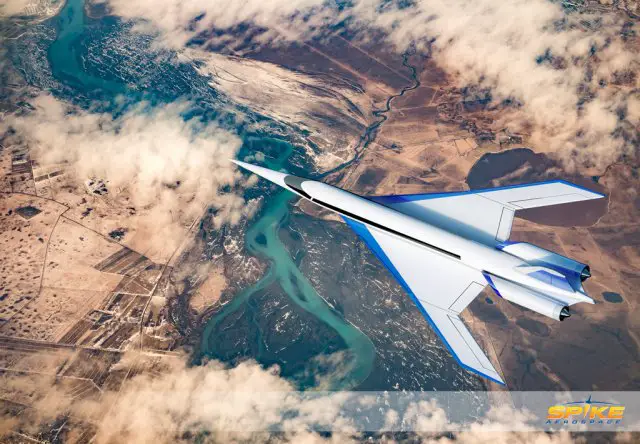Breaking news
Spike to bid on NASA QueSST supersonic ircraft demonstrator 640 001.
| a | |||
|
|
|||
|
World Aviation Defense & Security Industry News - Spike Aerospace
|
|||
|
|
|||
|
Spike to bid on NASA's QueSST supersonic aircraft demonstrator
|
|||
|
In the coming weeks, NASA will release a public request for proposals to build the QueSST aircraft, a low-boom supersonic demonstrator. This is a follow on project to the QueSST conceptual design that Lockheed Martin developed over the past two years. The project is garnering a lot of attention around the world as there is significant interest in a return to commercial supersonic flight.
|
|||
|
|
|||
 Spike Aerospace's Spike S-512 Quiet Supersonic Jet Spike Aerospace's Spike S-512 Quiet Supersonic Jet(Credit: Spike Aerospace) |
|||
|
|
|||
|
A number of aerospace companies will be competing on this bid, including a partnership of Spike Aerospace and several undisclosed companies. According to Spike President & CEO, Vik Kachoria, the partnership draws on the strengths of each of our partners. “Spike brings our experience in aerodynamics and supersonic aircraft design to the table,” he stated “while our partners bring established manufacturing, engine and aerodynamic analysis skills that are deeply respected throughout the industry.”
The QueSST demonstrator aircraft is an experimental aircraft that will carry a single pilot. After it is delivered to NASA in 2022, it will be flown over several metropolitan areas to measure the impact of the reduced sonic booms on the cities below. “QueSST isn’t going to directly lead to an commercial aircraft” said Kachoria. “It’s a research test plane which will help prove that quiet supersonic flight is not just possible, but achievable with today’s technology. This is something that Spike has been been developing over the past three years and hopes to work with NASA and Lockheed Martin on.” Paul Bremner, Senior Consultant at Quartus Engineering Inc., one of the partners Spike is working with, has over 30 years of experience in aircraft acoustics. He said “It is frustrating that sonic boom remains a hurdle to the introduction of next-generation, commercial supersonic aircraft. For some time now, NASA and the aero-acoustics community have developed the computational fluid dynamics and related tools to design quiet supersonic aircraft. NASA’s QueSST Supersonic Demonstrator will finally overcome that barrier, replacing simulations with actual ground measurements of acceptably quiet supersonic aircraft flyovers. We are proud to be playing a part in this milestone achievement.” Public-Private efforts such as these will be critical in the long-term legislative efforts to replace the existing laws that ban supersonic flight over the US, with new laws that set a maximum noise threshold. “With NASA’s and FAA’s involvement in studying low-boom supersonic flight,” claimed Kachoria, “it will be much easier to get laws in place that ensure the US remains at the forefront of this new aerospace market.” Simultaneously, Spike Aerospace is independently developing its own quiet supersonic jets, the Spike S-512, they will bring to the market in early 2020s. |
|||



















